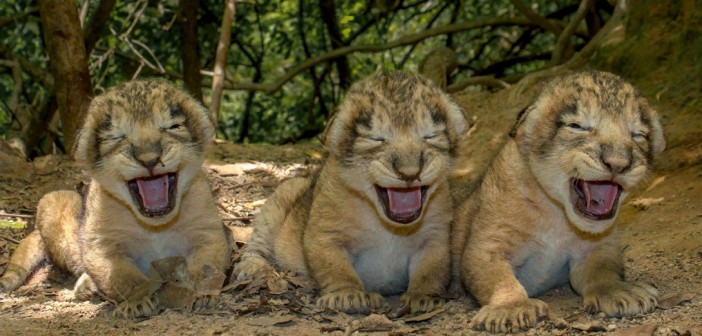They say for every dark night, there is a brighter day. After tragic flash floods in Gujarat, Saurashtra region in India, where 10 Asiatic lions, 1670 blue bulls and 87 spotted deer were killed, India finally has a reason to celebrate. Images of people carrying dead bodies of poor drowned animals are all over the internet, so much so that only the heartless could ignore it.
But, according to reports, 11 new-born lion cubs and four pregnant lionesses were discovered in the Gir Forest putting a smile on many people’s faces.
A home for more than 500 Asiatic lions, Gir Forest National Park is a sanctuary; it’s the last hope and abode for these endangered lions. Due to hunting and drought, numbers of these Panthera leo persica (or Indian lions) have decreased dramatically, and only thanks to a ban on hunting and preservation measures, the population of the big cats saw a rise from 411 in 2010 to 523 in 2015: 109 males, 201 female and 213 cubs.
Unfortunately, nature can be unpredictable and cruel, causing irreversible consequences for both humans and animals. Equally it’s not always the case. We, as intellectually developed creatures, have the ability not only to appreciate the beauty of wildlife but to do everything in order to support, protect and save it from disappearance. I hope that every person who looks at these lion babies remembers that their fragile lives are in our hands, and it depends on us to make sure they are part of ours and the next generation future.
As Asli Han Gedik, Board Member at Primate Freedom Project, Ambassador at African Lion & Environment Research Trust and European Representative at Orangutan Outreach, says:
“Preservation of the ecosystem and learning to coexist with other non human species is of utmost importance for humanity and our legacy, because if we do not, we might end up seeing these beautiful creatures in fairy tales only.”
If you like this article you may be interested in “Does It Matter How Well-Known Cecil the Lion Was?”.





